Hirotsu Power Station
Hirotsu Power Station is located in Ikusaka Village, Nagano Prefecture, on the banks of the Saikawa River. The power station building and the penstocks can be seen from National Route 19, so I have been curious about this building for a long time.
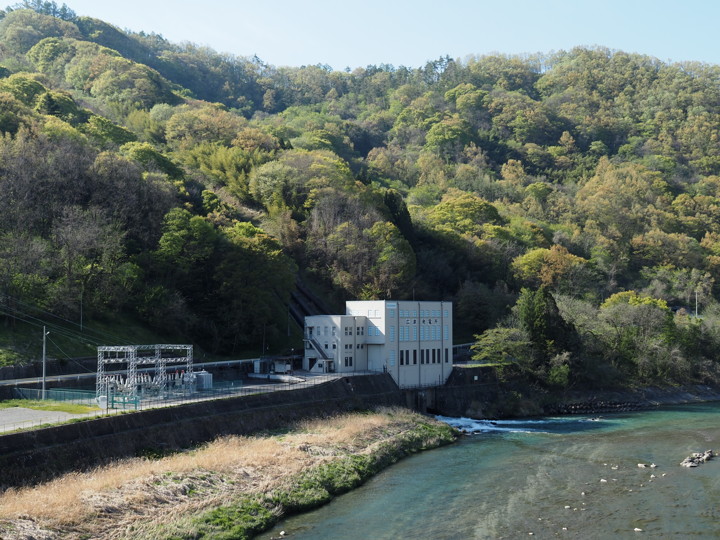
From Route 19, cross the Akitsu Bridge to the other side of the river. The power station is clearly visible from the bridge.
This power station was built by Showa Denko in 1939, but in January 2023, it was reorganized as a holding company and its name was changed to Resonac Holdings Corporation.
So also on the nameplate of the power station, the company’s name was changed from “Showa Denko K.K." to “Resonac Graphite Japan Corporation".
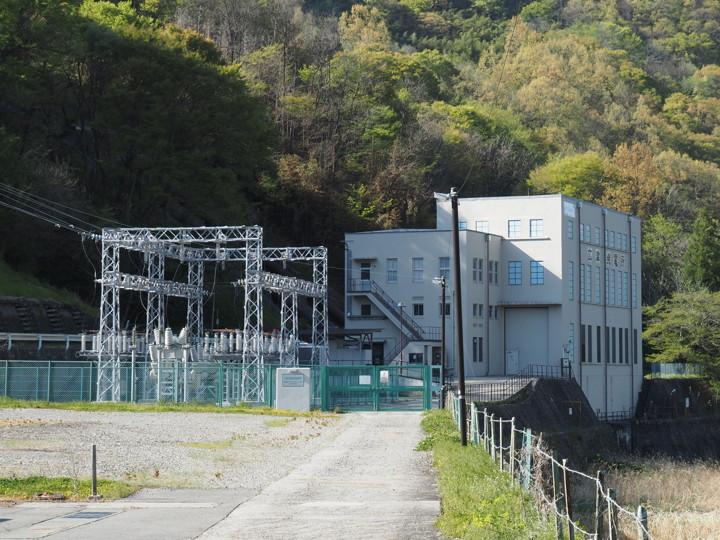
I did not apply for a tour of the plant, so I could not enter without permission. I only look at the building from the public road.
View of the building from the road on the west side of the power station. Looking at photos taken in the past, the windows were ordinary glass windows, but they were renovated in 2016, and (presumably) panels were fitted to the windows and window frames were drawn on them. It is likely they want to keep the image of the previous building.
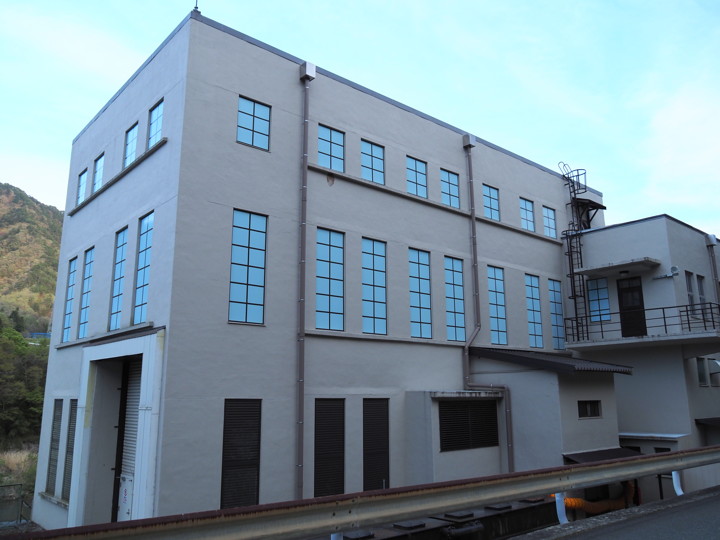
The penstocks are installed on the west slope. From left to right are No. 1 and No. 2 steel pipes, and on the far right is a surplus water pipe.
The plate on the pipes indicates that the current pipes were manufactured in 1976. The length of the iron pipe is about 500 m, and the fall-off distance is 204 m. Maintenance recently indicated that the surplus water iron pipe was painted in 2014 and the No. 1 and No. 2 iron pipes in 2019.
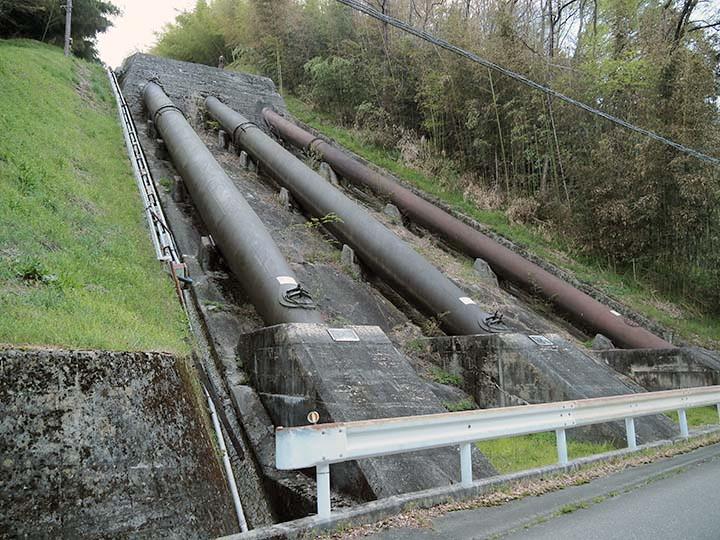
There is an information board near the Akitsu Bridge. It seems that there is a road over the penstocks and we can be accessed by car.
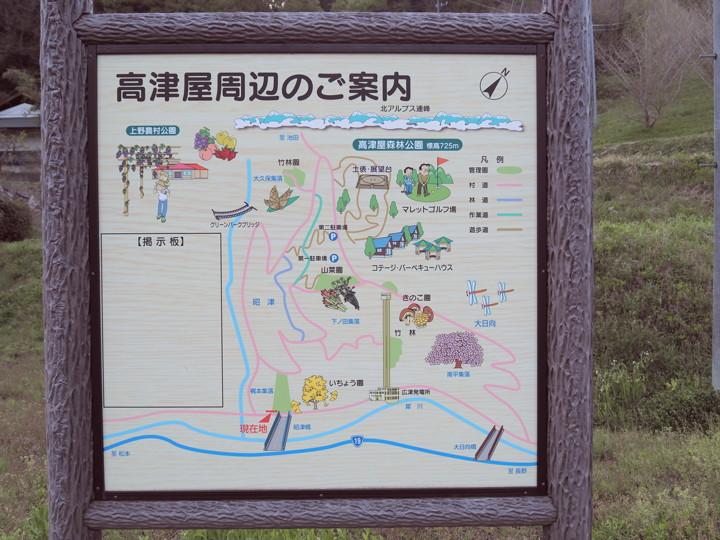
I drove up 200m altitude difference through a road where it was difficult to pass each other. Route 19 could be seen below.
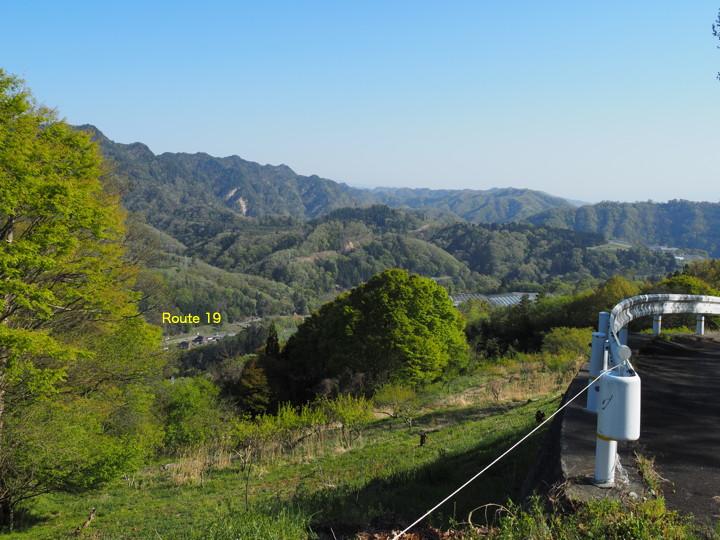
There is a water tank surrounded by a fence. From here, water is sent to the power plant through the penstocks.
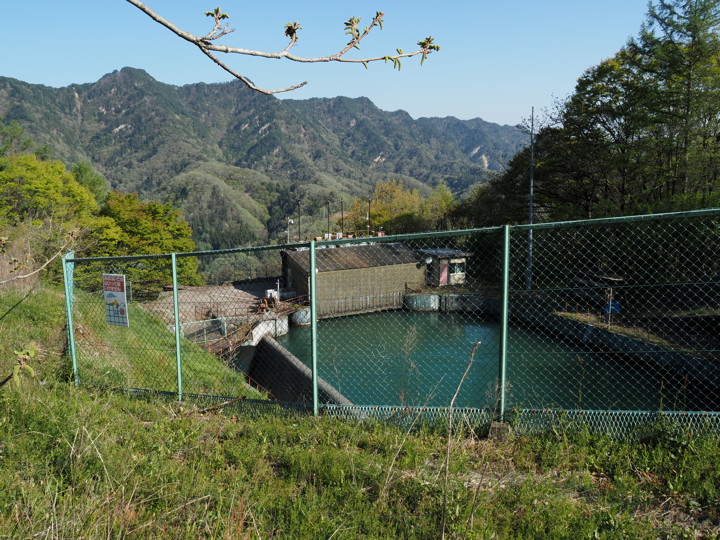
This is a view of the water tank, I took the photo between the fence. I can’t see it, but behind this there is steel pipes 500 meters long with a 200 meters drop that leads water to the power station.
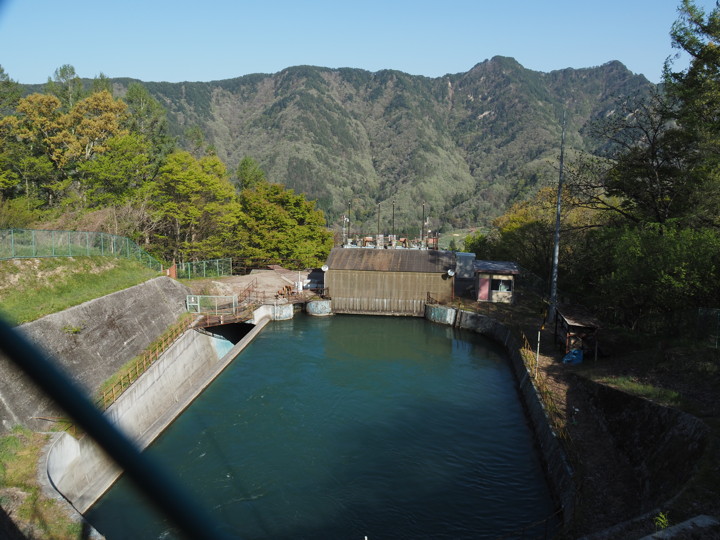
So where does this water come from?
I went down a little along the fence by the side of the water tank and saw the outlet of the canal.
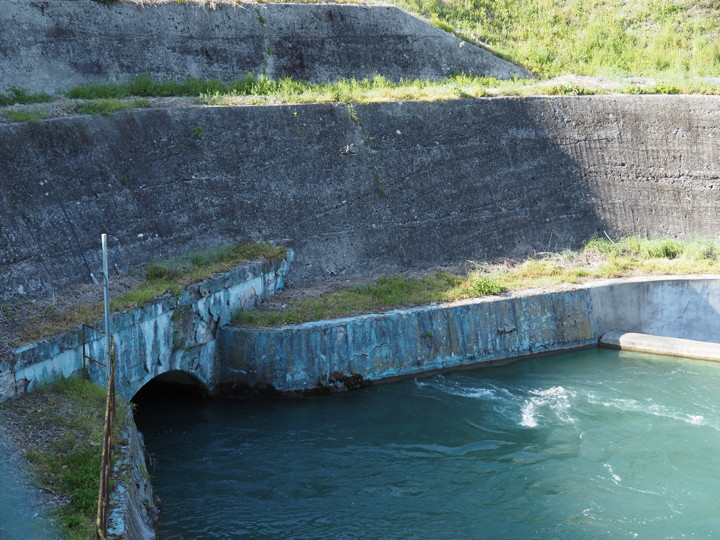
In fact, the water comes from the Tokiwa Power Station in Tokiwa, Omachi City, and is drawn here through the tunnel.
The Tokiwa Power Station was built in 1939 by Toshin Electric Co. (Was it also called the Wadagawa Power Station at that time? As of 1940, Showa Denko engineer refer to it as the Wadagawa Power Station. In the documents from that time, the name of the waterway from the power station is written as Wadagawa Discharge Channel.)
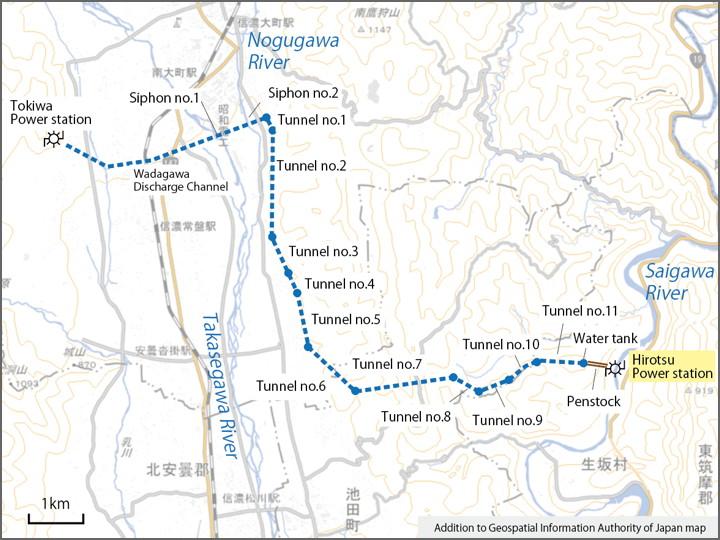
Two siphons are used to lead the water from the power station’s discharge channel to cross under the Takase River and the Nogu River. Then, a tunnel with a length of 9,580 m was dug from there.
The first 1926m of the tunnel has an inner diameter of 3.27m, which was then made thinner as the water was divided for irrigation, and the remaining 7618m has an inner diameter of 2.88m.
The water that passes through the tunnel comes to the water tank in the photo.
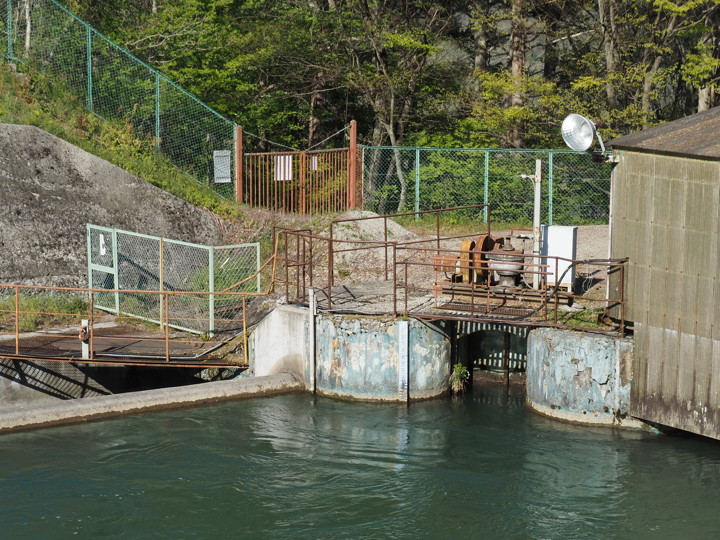
Returning to the road I came up and taking a side road on foot on the way, I reached the middle of the penstocks. There was a bridge over the water pipe, and I could cross it.
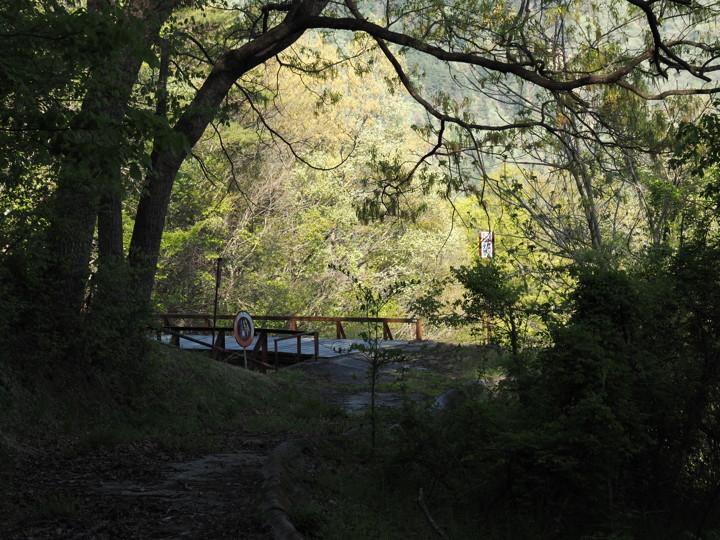
Looking up at the penstocks, I saw this view. The left and right sides of the pipes are off-limits.
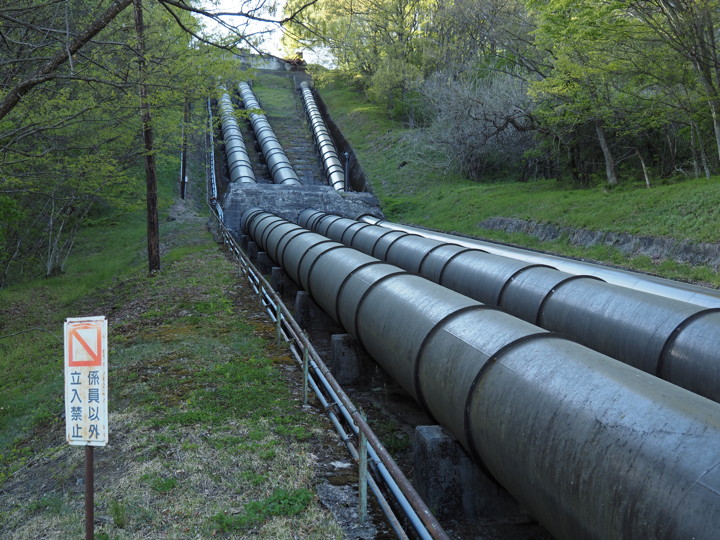
Looking down, I could not see the power station building.
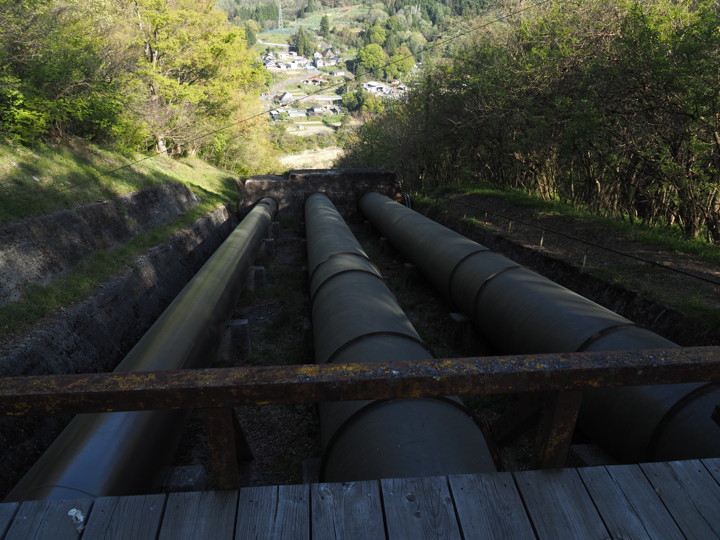
But after moving a little on the bridge, I saw the roof of the power station, so I zoomed in for a shot.
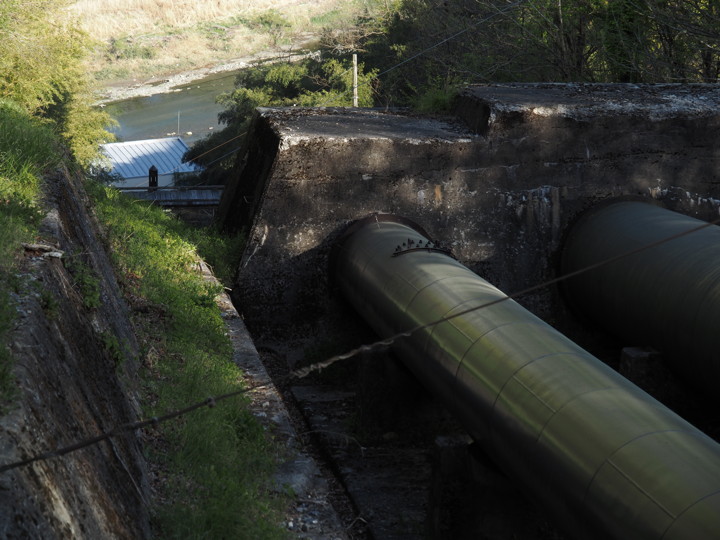
I went down and came to the power station again. It was after 4:00 p.m., but it was already in the shadow of the mountain.
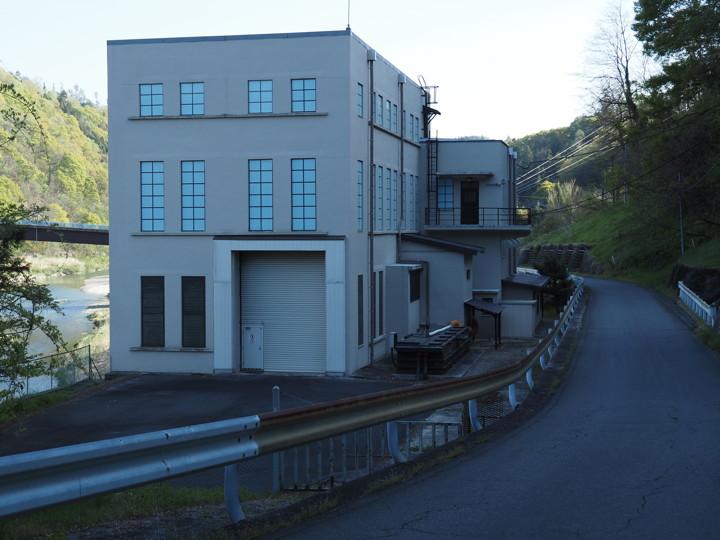
This was the end of the tour of the power plant for the day.
Finally, I add one old photo. (From the National Diet Library Digital Collection)
It is of the Hirotsu Power Station on the cover of the April 1940 issue of “Doboku News" (Civil Engineering News). This issue also contains an article about the construction of the Hirotsu Power Station, which was used as a reference for describing and mapping the tunnels.
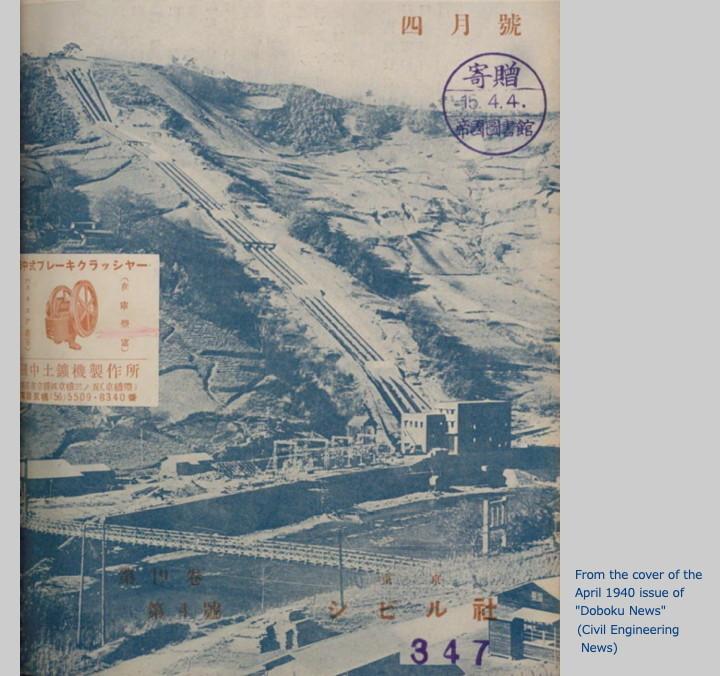
There are fewer trees in the mountains than there are now.
The bridge over the Saigawa River is a wooden suspension bridge. This bridge was built at the request of the local people who provided the land for the construction of the power station. Until then, ferryboats were used.
The name of the bridge was “Kajimoto-bashi Bridge" when it was built. Then part of Hirotsu Village merged with Ikusaka Village and the name of the district was newly named to Akitsu Ward in the 1957 merger of villages, the bridge was renamed “Akitsu-bashi Bridge". (Kajimoto was the name of a riverside hamlet, and the entire area of the three hamlets, including Shimonoda and Okubo, was designated as Akitsu Ward.)
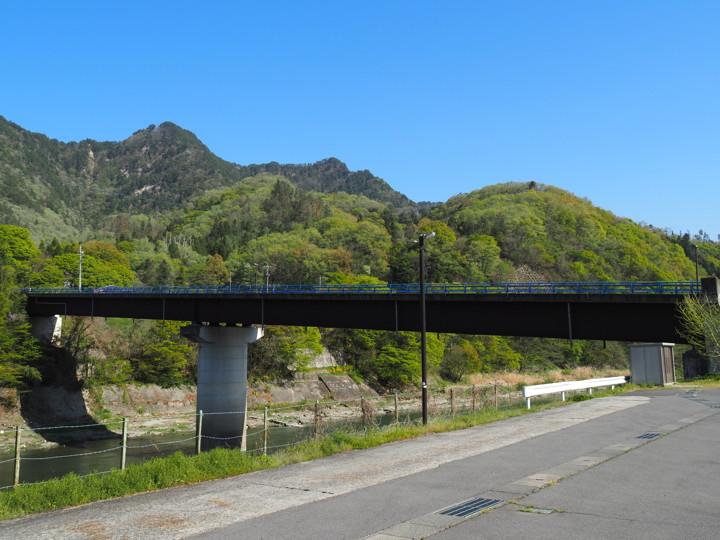
The current Akitsu Bridge was completed in March 2003. A monument commemorating its completion stands near the bridge.
[Additional note] (2023.05.06)
There was another description of the name of Akitsu Bridge in the Ikusaka Village History. According to the book, the bridge was renamed Akitsu-bashi in 1951 when it was transferred to the village, and the name of the district was given from the name of the bridge when the village was merged in 1957.
Was the name of the bridge given first, or was the name of the district given first? In fact, both are mentioned in the same Ikusaka Village History, so it is difficult to decide which is correct.
Personally, I think it is more natural that the name Akitsu was given to the bridge firstly. Because it is a combination of one kanji character of Showa Denko, which paid for the bridge, and one kanji character of Hirotsu Village.
[Reference] (written in Japanese)
“Outline of the construction of the Hirotsu Power Station" (published in the April 1940 issue of “Doboku News", written by Kingo Ohno, General Manager of the Power Generation Construction Department of Showa Denko K.K.)
“ikusaka Village History: history and Folklore" (Ikusaka Village History compilation committee, ed. 1997)

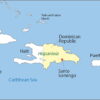
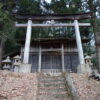
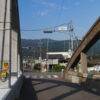
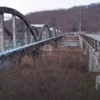
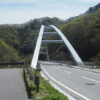
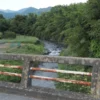
Discussion
New Comments
No comments yet. Be the first one!